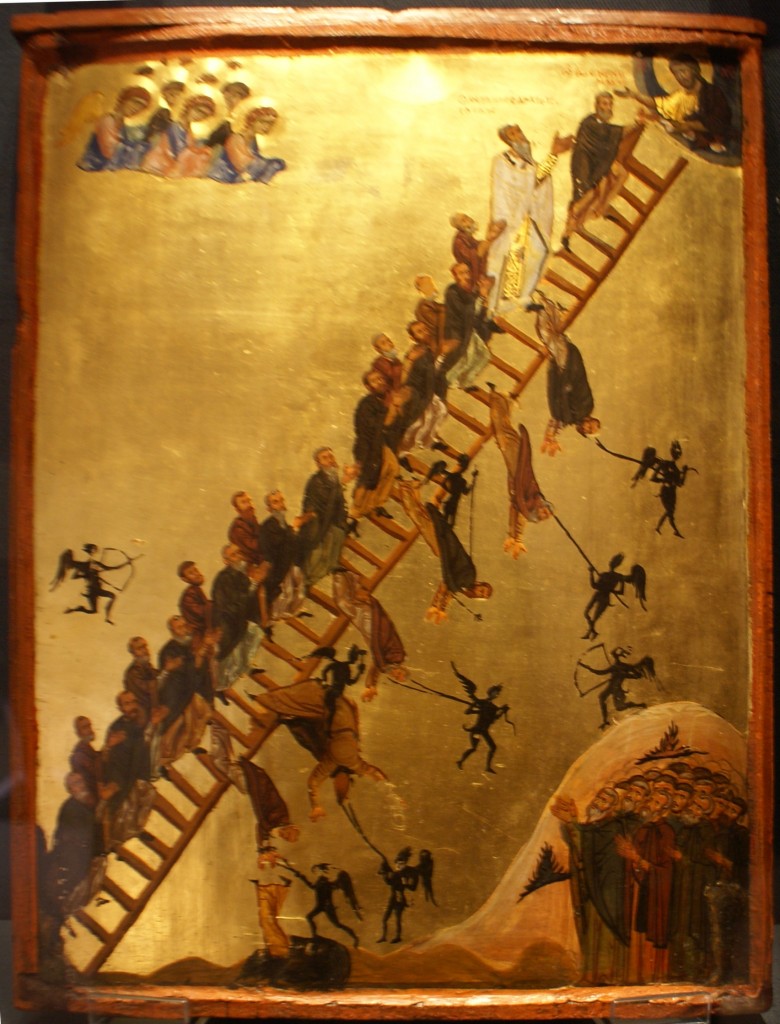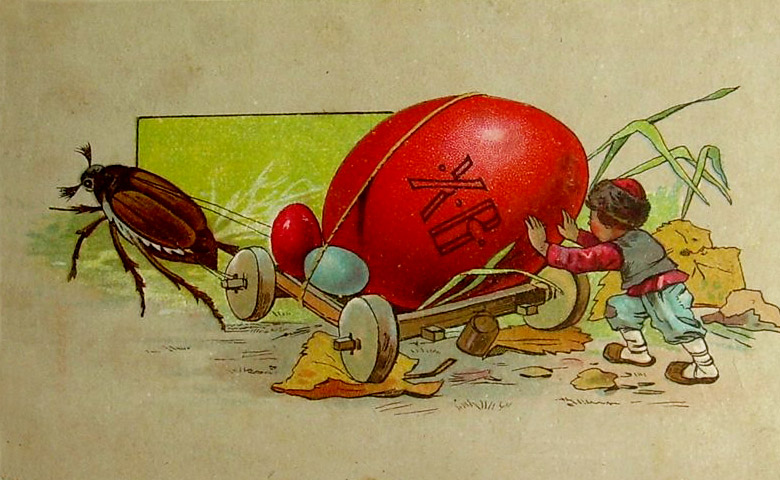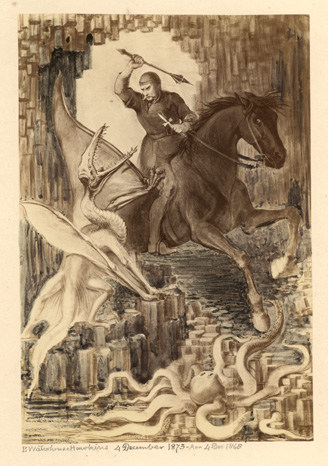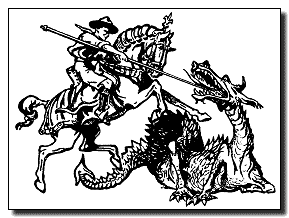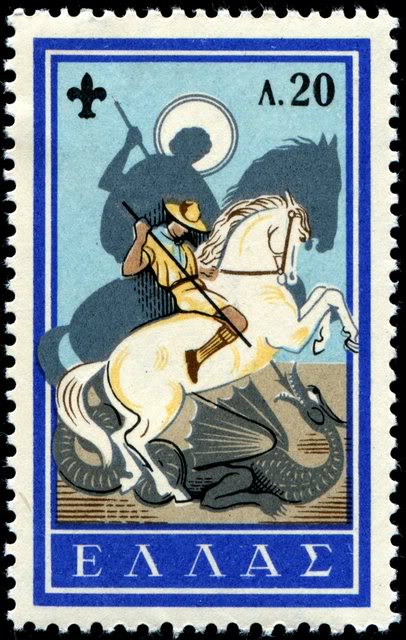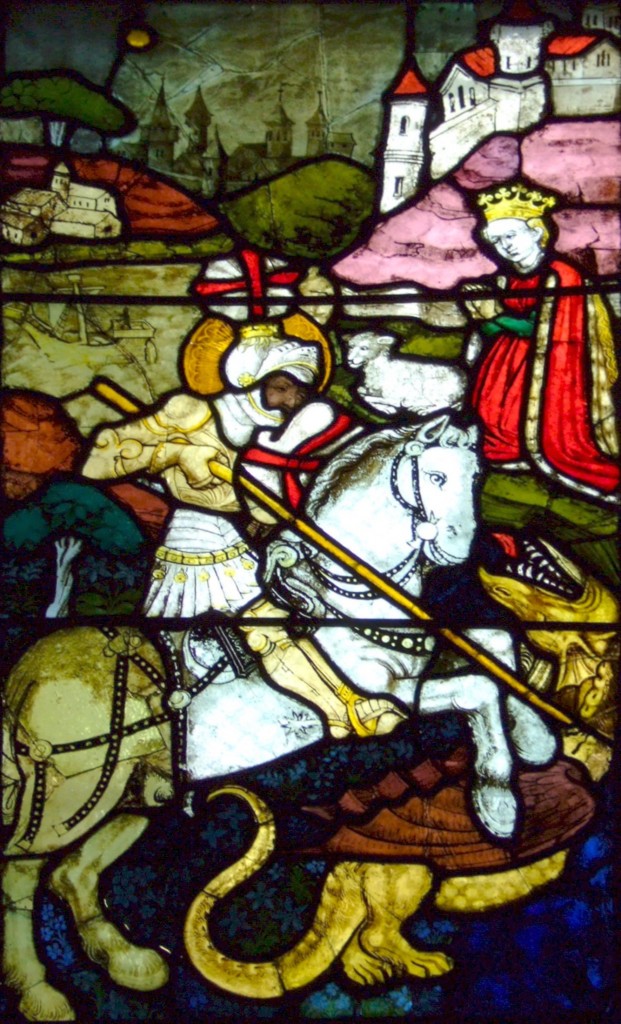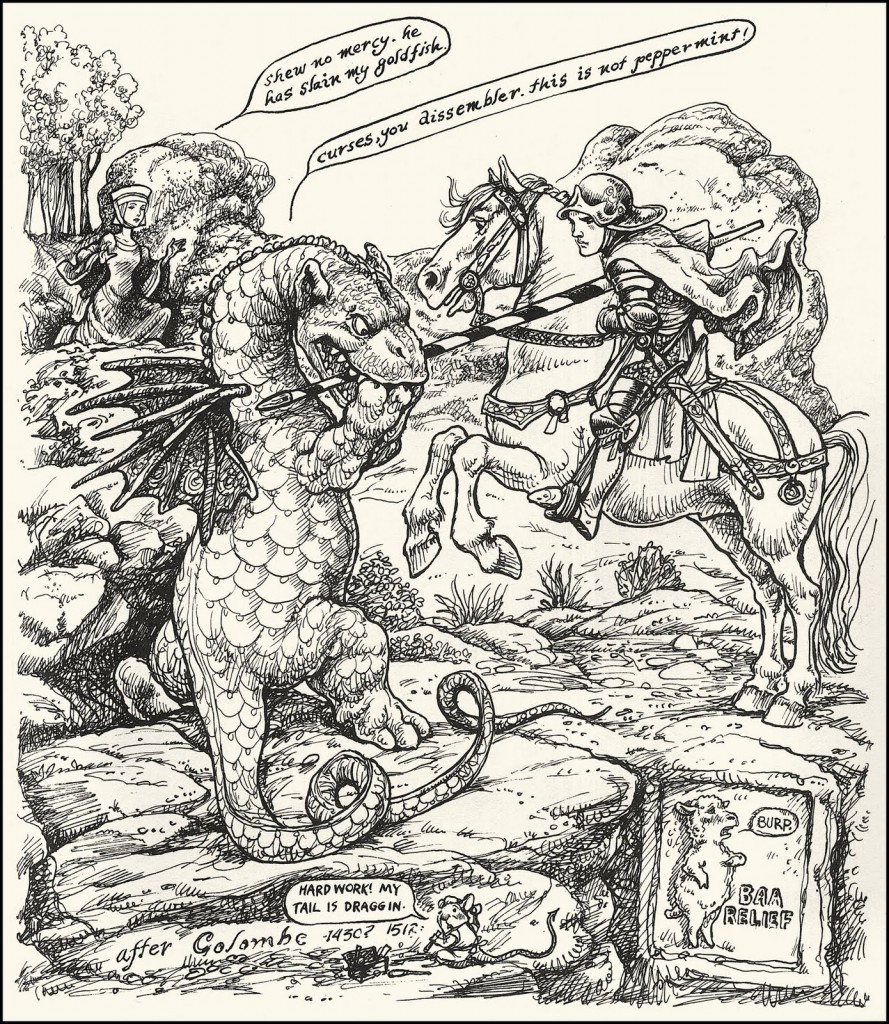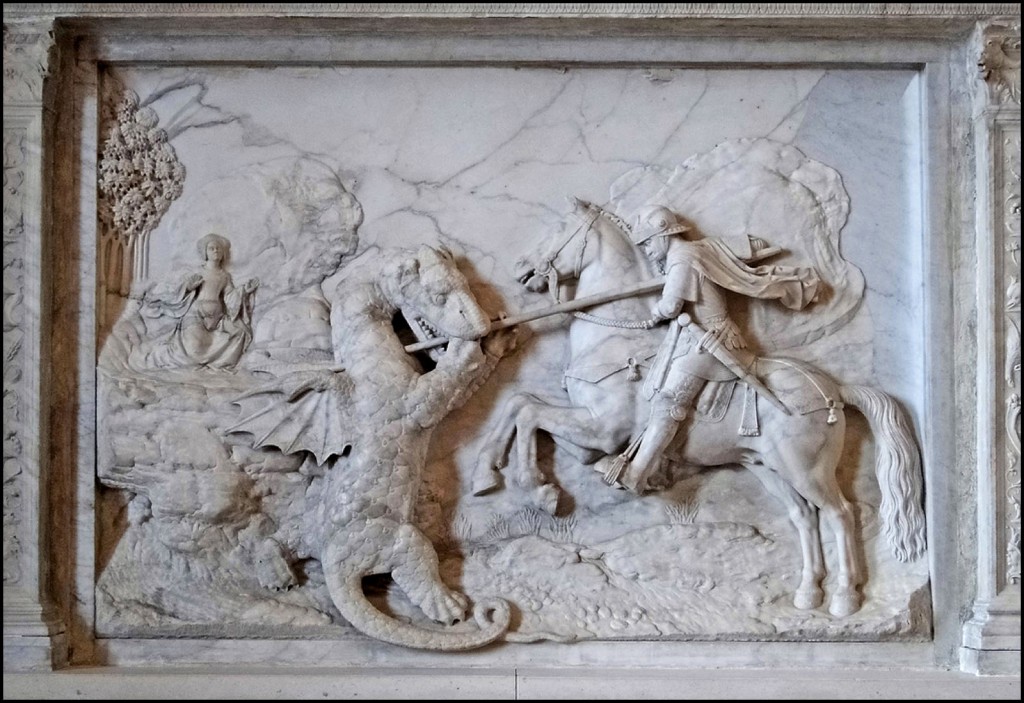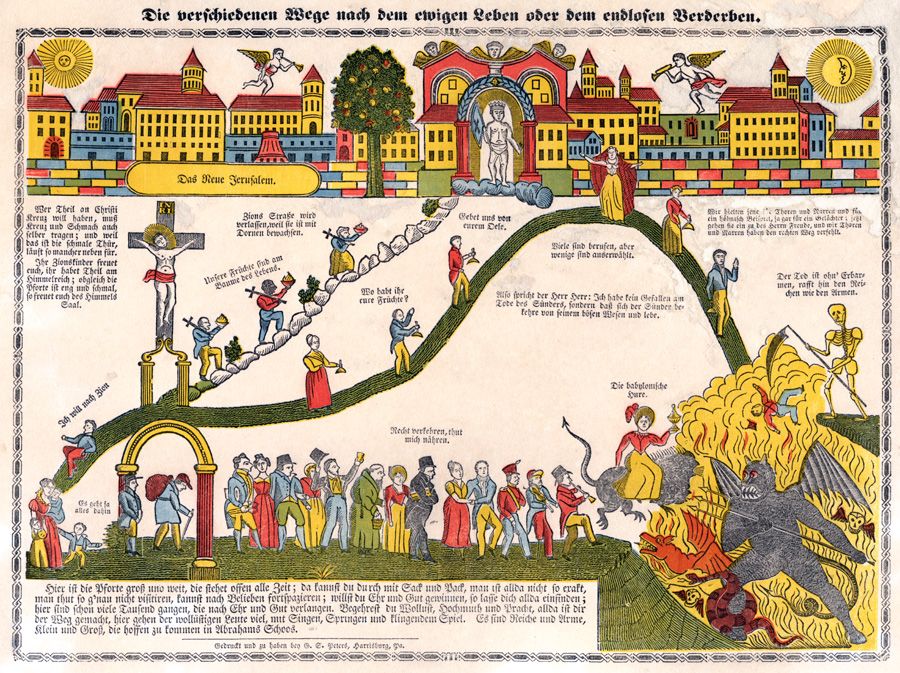
Die verschiedenen Wege nach ewigen Leben oder dem endlosen Verderben (Harrisburg: G.S. Peters, ca. 1835). Fraktur.
The Photo credit: Library Company of Philadelphia, Flickr
I came across an interesting piece of 19th century ephemera yesterday in the collection of the Library Company of Philadelphia. The German title translates roughly to “The Different Ways to Eternal Life or Endless Destruction.” There are so many amazing details in this image: the rocky road to the New Jerusalem, the variety of people, the Whore of Babylon riding the beast into hellfire. There’s a lot of end time theology and instruction packed into this one picture.
Curiously, it reminded me of another image, the icon called The Ladder of Divine Ascent at St. Catherine’s Monastery in Sinai.
The icon represents the ascetical teachings of St. John Climacus (John of the Ladder) and shows monks attacked by demons as they climb from earth towards Jesus in heaven. The ladder is inspired by Jacob’s dream. At the right is a monastery where John Climacus encourages the brethren to climb.
I’m often struck by the way we absorb ideas through images. Somehow they sneak past our scrutiny and we assume we know what they mean long before we actually do. We’ve gotten better about noticing subliminal messages in advertising, but I’m not so sure how well we do with thinking about theological messages.
I’ve been looking at these and thinking about the perils of trying to live a virtuous life. Unlike the monks, the people in the German print are not being attacked but seem to make choices. There are three paths, but only one leads to God. The first image feels more like a warning, and the second like an exhortation, but both are about the role we play in our sanctification, and if one is not thinking carefully, in our salvation. I’m not sure yet what these pictures are saying, but seeing them together gives me a handle on what questions I might ask.

